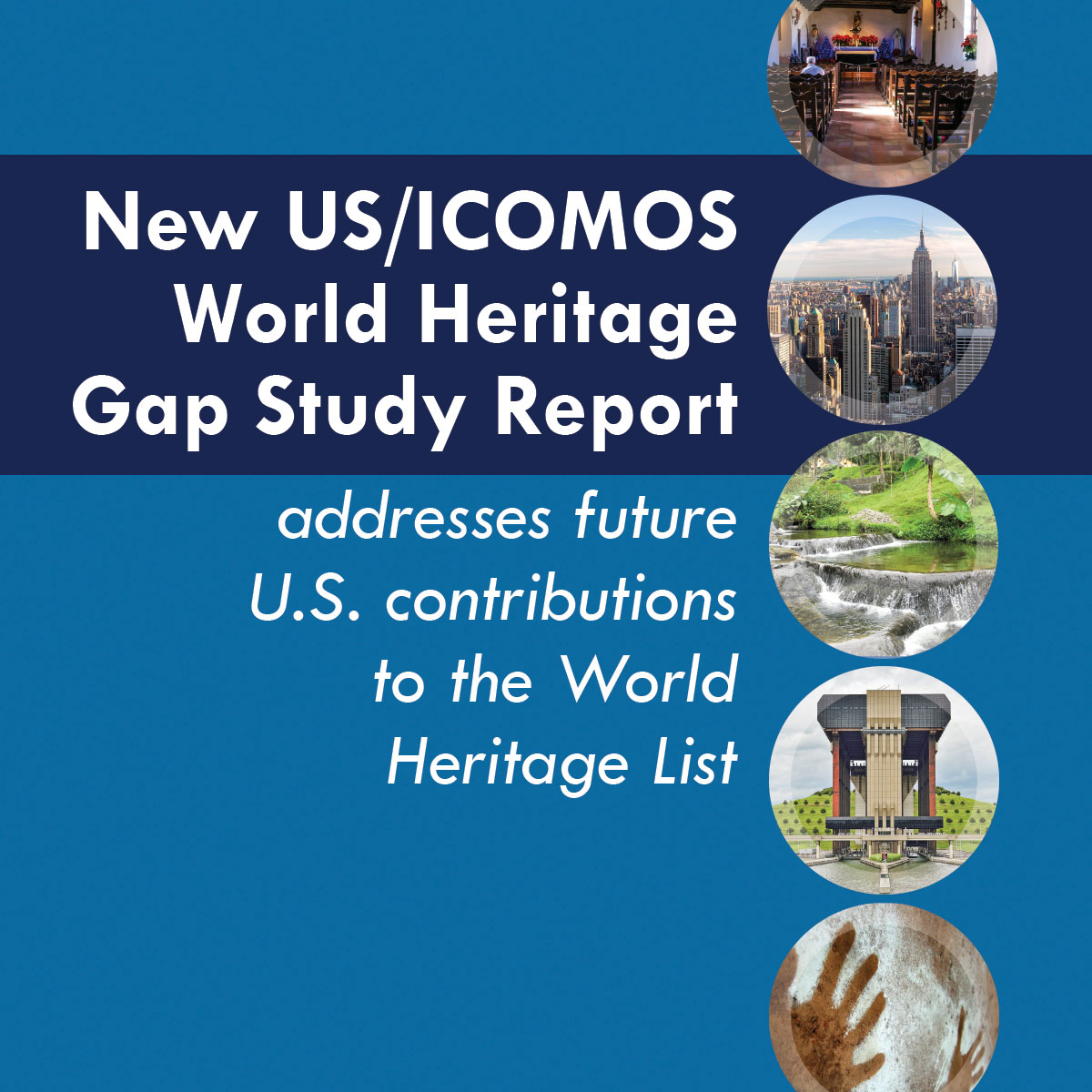US/ICOMOS has released its World Heritage Gap Study Report, providing an expert analysis intended to help guide the United State’s future World Heritage nominations. The Study was undertaken with the support of the U.S. National Park Service and in parallel with the plan to update the U.S. World Heritage Tentative List later this year. This would be the first update to the U.S. Tentative List since the current one was submitted to the World Heritage Committee in 2008.
The US/ICOMOS Gap Study is the product of a series of consultations that took from August to December, 2015. US/ICOMOS is grateful to the hundreds of heritage professionals and experts who participated in this process as well as the numerous volunteers that aided in the drafting of the Report. Drawing from the Consultation feedback, the Study identifies categories of U.S. cultural resources with potential universal and national significance that could both represent the breadth of U.S. heritage and also fill gaps in the World Heritage List previously identified by international experts.
Given the limited number of properties that can be added to the Tentative List in 2016, an important object of US/ICOMOS in preparing this Report was to bring forward a manageable, short list of such themes for consideration by the NPS. The Report ultimately identifies twelve specific themes, illustrated by sample properties for each thematic type.
The preparation of the Gap Study also surfaced a number of areas for future improvement. For example, a key source of the existing imbalance in the World Heritage List is the incomplete inventory of cultural heritage in many regions of the world. The Study found that the U.S. is not immune to this problem and that the need for more diverse U.S. National Historic Landmarks was in turn affecting the U.S.’s ability to help fill World Heritage gaps. The Study also found a need for better federal support of the efforts of local communities to develop World Heritage nominations and for increased efforts to address the inter-linkages of natural and cultural heritage, among other recommendations.
The NPS had indicated that it hopes to develop a short list of candidate sites for recommendation to the Department of the Interior by this fall. Thereafter, the Department will select approximately ten natural and cultural sites to add to the List. At that point, a revised Tentative List will be published in the Federal Register for public comment. This process is expected to be concluded by the end of 2016.
A country’s Tentative List is the key indicator of the sites it hopes to nominate to the World Heritage List in the future. The preparation of a Tentative List thus has significant consequences for the communities that aspire for World Heritage status. More broadly, its compilation is one of the most important expressions of cultural heritage a nation can undertake. For that reason, US/ICOMOS was honored to have been invited by the NPS to assist in the updating of the current US list.
Consultations conducted by US/ICOMOS produced a consensus the future additions to the US Tentative List should focus on sites drawn from three distinct clusters of themes:
• A •
Innovation, Invention,
Recent History, Technology, Modernist Legacy
• B •
Cultural Landscapes,
Mixed Cultural and Natural Sites, Early Human Occupation
• C •
Living Cultures,
Urban Heritage, Cultural Diversity, Diversity of Beliefs, Sites of Conscience
US/ICOMOS is deeply grateful to the National Park Service and the J.M. Kaplan Fund for their support of the US/ICOMOS World Heritage Gap Study Report.

